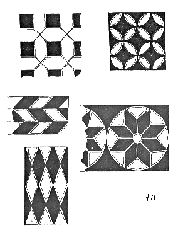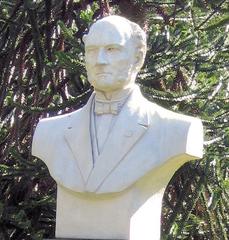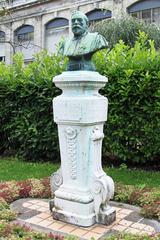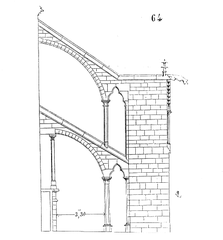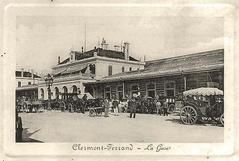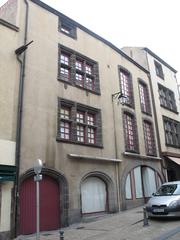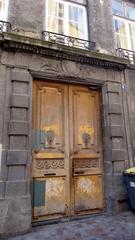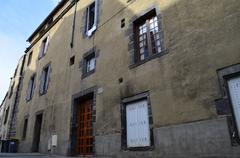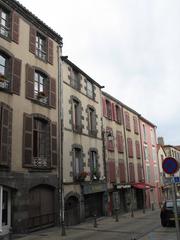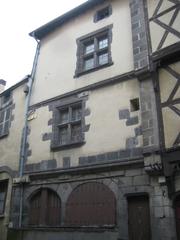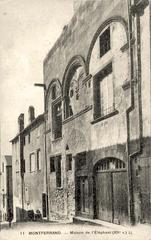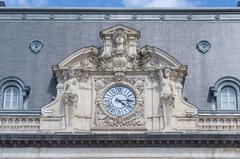Villa Solange Visiting Hours, Tickets, and Guide: Clermont-Ferrand Historical Site
Date: 14/06/2025
Introduction: Villa Solange and Its Significance in Clermont-Ferrand
Villa Solange, located at 91 rue Blatin in Clermont-Ferrand, is an outstanding example of early 20th-century bourgeois architecture. Designed by architect Jarrier, the villa showcases a unique fusion of Art Nouveau and balnéaire (seaside) styles, distinguished by its irregular stonework, decorative terracotta reliefs, wooden tympanums, and vibrant glazed tiles. Its architectural experimentation mirrors Clermont-Ferrand’s economic prosperity and evolving urban landscape during the late 19th and early 20th centuries. Recognized as a Monument Historique since 2012, Villa Solange is legally protected for its exceptional cultural and architectural value (Monumentum).
Although Villa Solange remains a private residence and is not routinely open to the public, it occasionally welcomes visitors during special cultural events, most notably the European Heritage Days. Its prime location west of the city center, within a historically affluent quarter, makes it an essential stop for architecture enthusiasts and cultural travelers. Nearby landmarks, such as the Gothic Cathedral of Notre-Dame-de-l’Assomption and the Chaîne des Puys volcanic range, further enrich the visitor experience.
This guide provides a comprehensive overview of Villa Solange—covering its history, architectural significance, visiting information, accessibility, and practical tips—offering valuable insights for anyone interested in Clermont-Ferrand’s heritage. For the latest updates and virtual resources, consult official heritage sites and local tourism offices (Monumentum; Clermont Auvergne Volcans; France.fr).
Table of Contents
- History and Architectural Context
- Architectural Features and Artistic Value
- Heritage Status and Urban Setting
- Visiting Information
- Highlights and Visitor Experience
- Nearby Attractions
- FAQ
- Practical Tips
- Visuals and Media
- Conclusion and Further Resources
1. History and Architectural Context
Villa Solange was constructed during Clermont-Ferrand’s urban expansion in the early 20th century—a period marked by industrial growth and a flourishing bourgeoisie (Monumentum; POP Culture). The villa reflects the era’s eclectic tastes, blending the balnéaire style with Art Nouveau’s organic forms, a testament to the city’s openness to cosmopolitan influences and architectural innovation.
2. Architectural Features and Artistic Value
Villa Solange’s façade features a robust ground floor of irregular volcanic stone, with two prominent brick arches framing a terracotta relief—a hallmark of Art Nouveau design. The upper level contrasts this solidity with rendered surfaces, faux half-timbering, and colorful glazed tiles. Decorative wooden tympanums above the entrance add dynamic, curving lines, while high-quality craftsmanship is evident throughout the structure. These elements distinguish Villa Solange from Clermont-Ferrand’s more traditional volcanic stone buildings, making it a jewel of regional architecture (Monumentum; POP Culture).
3. Heritage Status and Urban Setting
Designated as a Monument Historique in 2012, Villa Solange and its property (cadastre IT 49) are protected under French heritage law, ensuring preservation of their unique character (Monumentum). The villa is situated in a prestigious neighborhood that emerged during the city’s economic heyday, reflecting the rise of Clermont-Ferrand’s affluent classes and the diversity of its built environment (Clermont Auvergne Volcans).
4. Visiting Information
- Location: 91 rue Blatin, 63000 Clermont-Ferrand, France
- Access: Primarily a private residence, Villa Solange is only accessible to the public during events like the annual European Heritage Days (September).
- Tickets: No regular ticketing; access during open days is typically free, but may require advance registration.
- Guided Tours: Occasionally available during heritage events. Check with local tourism offices (Clermont Auvergne Volcans).
- Accessibility: Access to the interior may be limited; exterior viewing is always possible from public sidewalks.
- Photography: Exterior photography is allowed; interior photography is generally restricted.
5. Highlights and Visitor Experience
Exterior
The villa’s use of “pierre de Volvic,” dark volcanic stone, provides a striking contrast to lighter architectural elements and is emblematic of Clermont-Ferrand’s identity. Elegant wrought-iron balconies, terracotta reliefs, and glazed tiles create a visually rich façade. Expansive terraces and balconies offer views of the city and nearby volcanic hills.
Interior
On rare open days, visitors can admire original features such as high ceilings, ornate fireplaces, stained glass, and intricate woodwork. The gardens, when accessible, display formal French landscaping with geometric beds and shaded walks, creating a tranquil oasis.
6. Nearby Attractions
- Clermont-Ferrand Cathedral: Iconic Gothic structure built from local lava stone (France.fr).
- Place de Jaude: Main city square, vibrant with shops and cafés.
- Montferrand Medieval Quarter: Cobblestone streets and historic timber-framed houses.
- Parc Montjuzet: Panoramic views over the city and volcanic landscape.
- Musée Bargoin: Archaeology and textile art (Clermont Auvergne Volcans).
- L’Aventure Michelin: Interactive museum on the city’s industrial heritage (France.fr).
7. Frequently Asked Questions (FAQ)
Q: Can I visit Villa Solange every day?
A: No, it’s a private residence. Access is typically limited to special events such as European Heritage Days.
Q: Where can I get tickets for open days?
A: Usually through the Clermont Auvergne Volcans Tourist Office or event-specific websites.
Q: Are there guided tours?
A: Yes, but only during official open events or by prior arrangement.
Q: Is Villa Solange accessible for people with reduced mobility?
A: Accessibility may be limited due to the historic nature of the property. Inquire in advance.
Q: Can I photograph the villa?
A: Exterior photography is permitted from public areas; interior photography is generally not allowed.
8. Practical Tips
- Plan ahead: Visit during European Heritage Days for the chance to see the interior.
- Combine attractions: Pair your visit with the city’s cathedral, museums, and parks.
- Respect privacy: Remain on public sidewalks unless attending a special event.
- Best time to visit: Late spring to early autumn, when gardens are in bloom and cultural activities abound.
- Transportation: Easily accessible by foot, bus, or taxi from the city center; parking may be limited nearby.
9. Visuals and Media
- “Facade of Villa Solange Clermont-Ferrand showcasing Art Nouveau architecture”
- “Decorative terracotta reliefs on Villa Solange exterior”
- “Villa Solange entrance with wooden tympanum and brick arches”
- Map: Villa Solange Location on Google Maps
High-quality images and virtual tours are available on Monumentum and official tourism sites.
10. Conclusion and Further Resources
Villa Solange is a hidden gem that encapsulates Clermont-Ferrand’s architectural innovation and historical richness. While access is limited, its unique design, heritage status, and role within the city’s urban tapestry make it a rewarding discovery for those interested in French culture and history. Stay informed through local tourism platforms, and consider planning your visit around special open days for the best experience.
For further information and updates:
Related Articles
For official event schedules, always consult tourism and heritage websites before planning your visit.
